Key takeaways:
- Selective mutism is a complex anxiety disorder that often results in silence due to fears of judgment and social anxiety, emphasizing the need for empathy and understanding from others.
- Raising awareness about selective mutism can prevent misinterpretations of behavior, fostering safer and more supportive environments for affected individuals.
- Effective strategies to manage anxiety include progressive muscle relaxation, visualization techniques, and breaking tasks into smaller steps to enhance confidence in communication.
- Creating supportive environments and encouraging open conversations can empower individuals with selective mutism, helping them find their voice in a safe setting.

Understanding Selective Mutism
Selective mutism is a complex anxiety disorder where a person, often a child, struggles to speak in certain situations despite being able to communicate comfortably in other contexts. I remember a friend whose daughter would light up and chat away at home but would freeze in fear at school. Hasn’t anyone experienced that feeling of wanting to say something but feeling a weight in their throat?
The silence stemming from selective mutism isn’t just a lack of words. It often carries the heavy burden of social anxiety, crippling self-doubt, and a pressing fear of judgment. I can still recall the discomfort of being in social settings and feeling the pressure to speak when all I wanted was to blend into the background. It’s a silent scream for understanding, isn’t it?
Understanding selective mutism goes beyond recognizing the behavior; it involves empathizing with the emotional landscape that accompanies it. For many, this silence may mask a rich inner world bursting with thoughts and ideas that remain trapped. In my experience, it’s essential for friends, family, and educators to create a safe space where individuals with selective mutism can gradually find their voice without the fear of response. What would it take for us to listen and understand this silent struggle better?
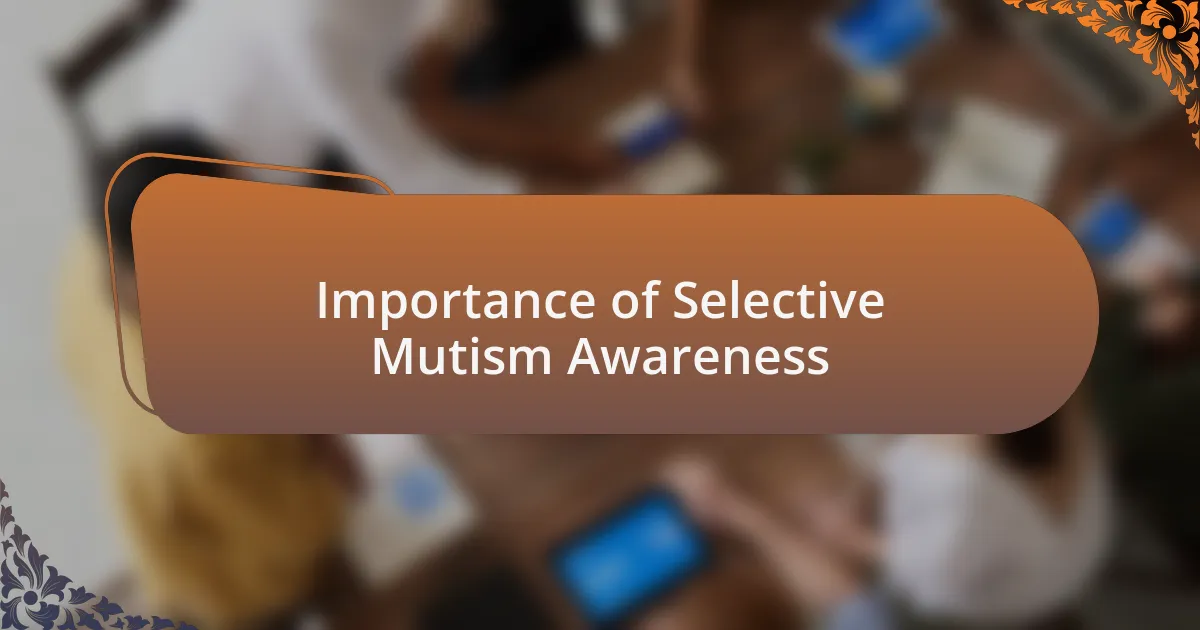
Importance of Selective Mutism Awareness
The significance of selective mutism awareness cannot be overstated. Many people, including educators and peers, often misinterpret the behavior as defiance or rudeness rather than a manifestation of anxiety. I once watched a teacher dismiss a shy student, thinking she was just being difficult, but it struck me how crucial it is for adults to recognize these signs and approach such situations with empathy and support.
Raising awareness fosters a deeper understanding, creating environments where individuals with selective mutism feel safe and valued. I recall a workshop I attended where various strategies were shared, shedding light on the importance of patience and encouragement. The realization that my small gestures—like offering a smile or giving someone time to respond—could profoundly impact someone’s journey was enlightening.
Ultimately, awareness connects us to those who struggle silently. How can we create a society that nurtures their growth? Reflecting on my own experiences, I believe that awareness not only educates but also promotes compassion, allowing everyone to thrive. Each of us has the power to act as a catalyst for change, paving the way for a more understanding world.
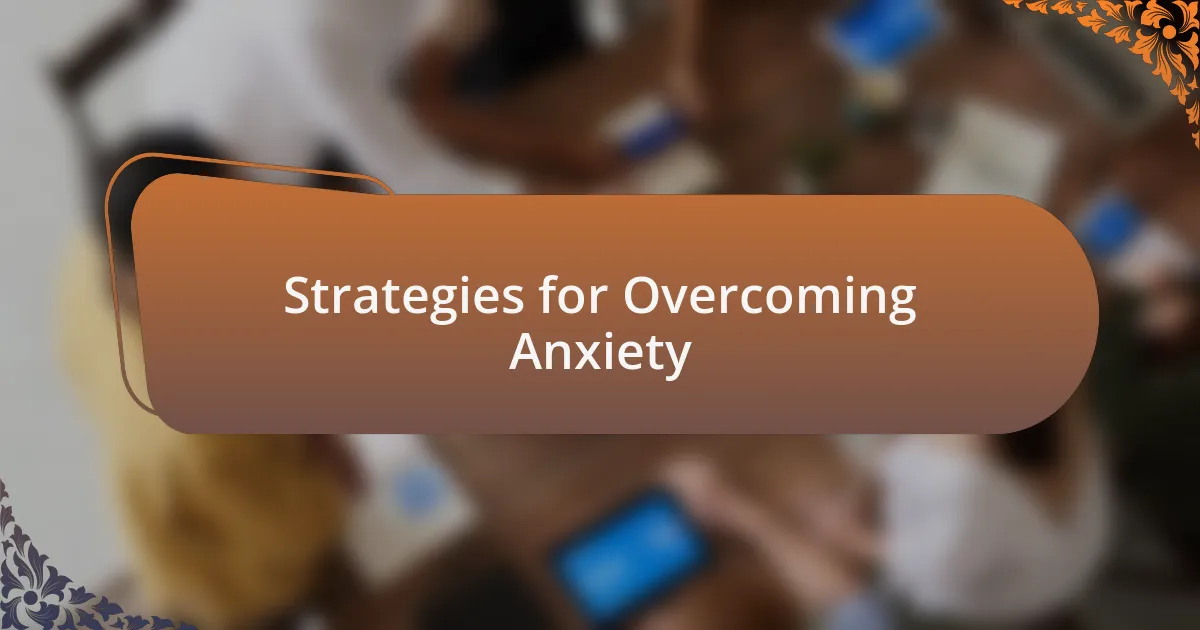
Strategies for Overcoming Anxiety
Finding effective strategies for overcoming anxiety has been a journey for me. One technique that helped was progressive muscle relaxation. I remember sitting quietly, focusing on each muscle group, and letting go of the tension. It was surprisingly calming and reminded me that I could regain control over my body, even in anxious moments. Have you ever tried something similar? It could be life-changing.
Another strategy I found valuable is visualization. Picture a safe place, where you feel comfortable and secure. When I feel anxiety creeping in, I often close my eyes and immerse myself in that space. This mental escape is a powerful tool that helps to ground me, providing a break from overwhelming thoughts. It’s interesting how our mind can be both a source of anxiety and a refuge, isn’t it?
Finally, I’ve learned to break tasks into smaller steps. Instead of focusing on the overwhelming picture, I ask myself, “What’s my first step?” During my own challenges, the idea of tackling something big felt insurmountable, but by focusing on just one manageable action, I felt more empowered. It has been a gentle yet effective way to push back against anxiety, turning what feels like a mountain into a series of achievable hills. Can you picture how that might work for you?

Personal Experiences with Selective Mutism
Reflecting on my experiences with selective mutism, I remember the weight of silence in situations where I longed to speak. There were countless moments in school when I felt invisible among my peers, unable to voice my thoughts despite knowing I had something valuable to contribute. Have you ever felt trapped in your own silence, as if words were stuck in your throat, just waiting for the right moment to escape?
In social gatherings, I often found myself on the fringes, observing rather than participating. The chatter around me was like a distant rhythm, and while I yearned to join in, a wave of anxiety would wash over me, leaving me paralyzed. I can vividly recall the comfort of a close friend’s gentle encouragement, which made those moments slightly more bearable. Does having just one supportive person in your corner make a difference in your experiences too?
Looking back, I realize that understanding selective mutism in myself shaped my view on communication. It wasn’t just about the inability to speak; it guided me to appreciate non-verbal cues and the power of listening. This awareness of the subtleties of communication continues to influence how I interact with others today. How has your relationship with communication evolved over time?
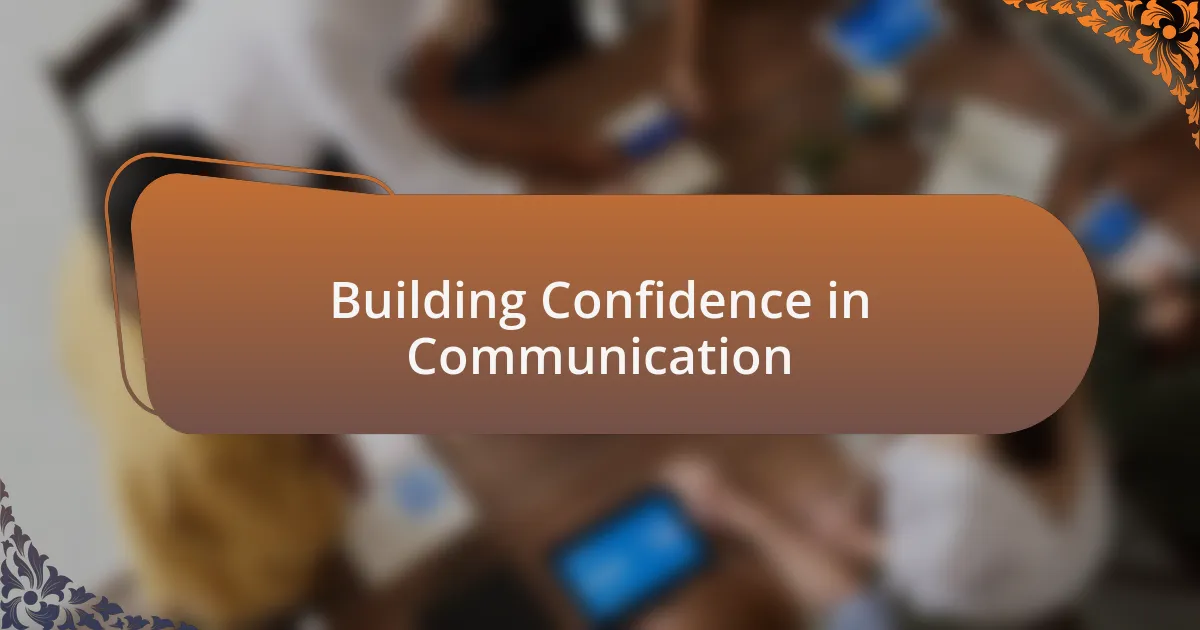
Building Confidence in Communication
When I began to push my limits in communication, small victories became crucial. I remember practicing phrases in front of my mirror, gradually building up to real conversations. Each time I spoke—even if just to a family member or friend—I could feel my confidence swelling just a bit. Have you ever found that one successful interaction can fuel your desire to speak more?
Another impactful step was joining a supportive group where sharing experiences was encouraged. At first, I listened more than I spoke, but the safe environment encouraged me to voice my thoughts in ways I never thought possible. Isn’t it astonishing how being around empathetic individuals can dissolve the walls we build around ourselves?
Honestly, there were days when I stumbled, feeling my heart race and words escaping me. Yet, those moments taught me resilience; they reminded me that building confidence is a journey. Have you noticed how each challenge can ultimately make you stronger, even when it feels daunting?
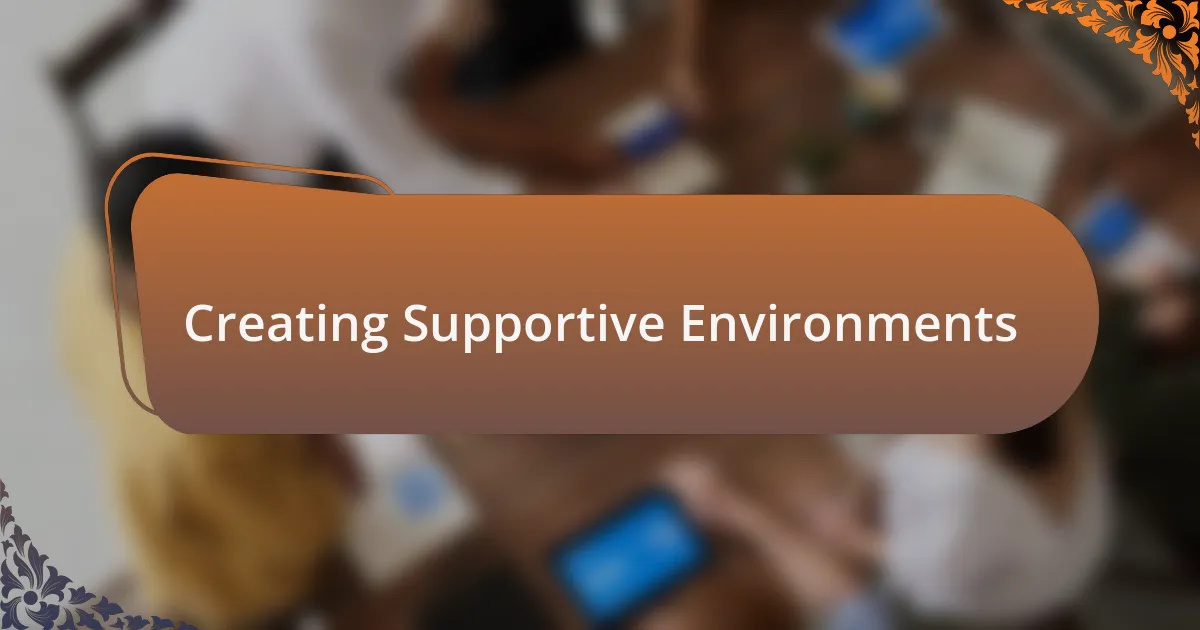
Creating Supportive Environments
Creating a supportive environment is essential for anyone dealing with selective mutism. I remember the first time I stepped into a classroom designed to be accommodating—there were soft lighting, flexible seating options, and a clear focus on empathy. It felt like a breath of fresh air, allowing me to express myself without fear of judgment. Have you ever walked into a space that instantly made you feel at ease?
Having understanding individuals around makes all the difference. I once had a teacher who encouraged me to communicate in whichever way felt comfortable, even if that meant writing instead of speaking. I can’t emphasize enough how that small adjustment made me feel valued and heard. Isn’t it interesting how a little flexibility can open doors to expression?
Perhaps the most meaningful experiences come from community initiatives that promote awareness and acceptance. I found solace in group activities where sharing was cherished, and every effort, no matter how small, was celebrated. Isn’t it empowering to know you’re not navigating this journey alone, and that collective support can uplift us all?
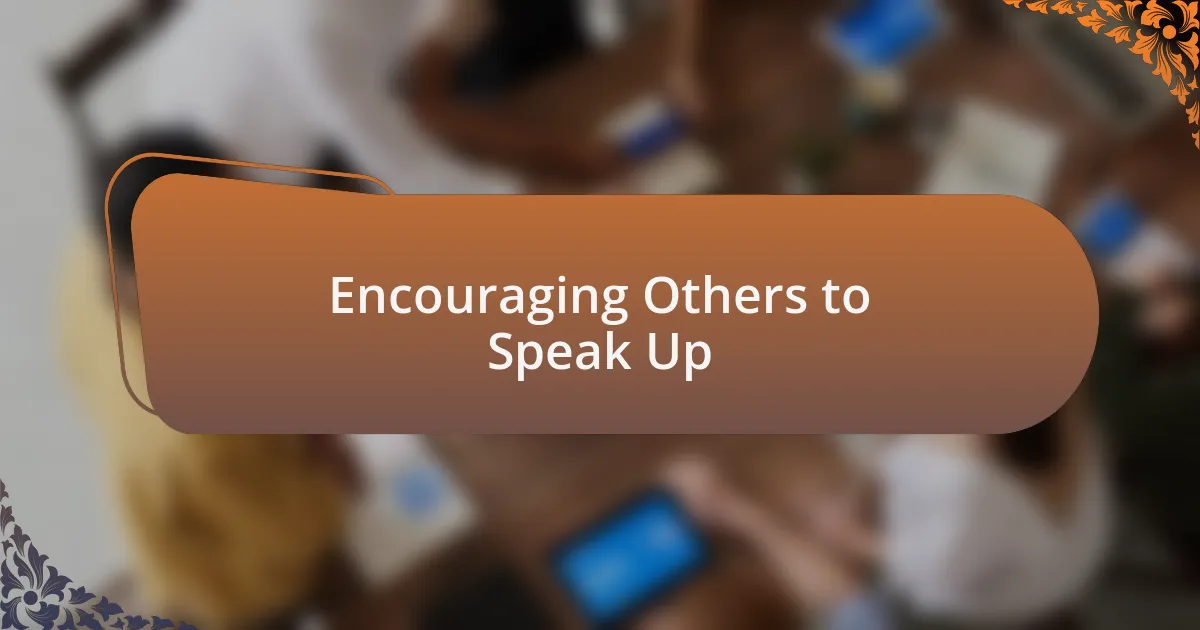
Encouraging Others to Speak Up
Encouraging others to speak up often begins with understanding the fears that silence can bring. I vividly recall a moment at a community gathering where someone voiced their struggles with selective mutism. Their bravery inspired others to share their experiences, creating an intimate circle of support. Have you ever felt that ripple effect when someone dares to break the silence?
It’s amazing how a simple “I believe in you” can go a long way. I once shared this sentiment with a friend who was grappling with speaking in group settings. That one phrase seemed to lift a weight from their shoulders, and soon they found the courage to express themselves, even if it was just a word or two at a time. How powerful is it to empower someone with just a few supportive words?
We can also facilitate open conversations by actively listening and validating feelings. I remember being in a workshop where everyone was encouraged to share their thoughts, and I felt a rush of relief when someone said, “It’s okay if you don’t want to talk right now.” That acknowledgement made me feel safe to eventually join the discussion. How often do we create spaces that truly honor each individual’s comfort levels?